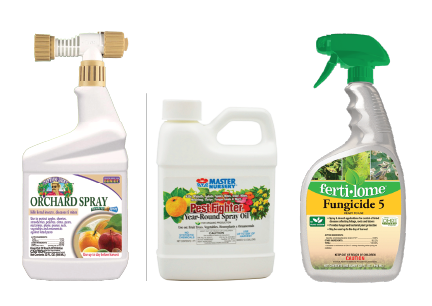What's on My Plant? - Powdery Mildew
Powdery Mildew
Powdery Mildew appears as a white powdery mat-like growth on buds, shoots and new and old leaves, often described to us as “white mold”. First appearing as either small white or chlorotic (yellowing) spots, powdery mildew can form thickened mats which can cover an entire leaf, shoot or stems. Our moderate, coastal area, cool, foggy springs and summers with temperatures in the 60°’s to 80°’s, are ideal for spore germination. Shady areas with limited air circulation will further encourage the disease, as well as high humidity conditions.
Infection occurs when the airborne spores land on host plants and the environmental conditions are favorable. Spores from the infected areas are not only spread by the wind, but also by the splash from irrigation or rain and even carried on birds. The disease overwinters in infected dormant buds or as spores on branches or stems. It is not considered fatal but can cause considerable damage if left untreated.
Damage: Infected leaves turn yellow, die and eventually drop off. The new growth of fruit trees and ornamentals can be dwarfed and distorted. Fruit can develop reddish brown rough areas on their surface. Early infection can also stop fruit development and cause fruit drop.
Cultural Control: Minimize the chances of infection by considering the following.
Select appropriate plants for the location.
Do not over-plant. Allow plants to mature with space around them to increase air circulation.
Improve air circulation by pruning excess foliage and thinning the plant.
Removing infected leaves can improve disease control.
Practice moderation when applying higher nitrogen fertilizers, or use slow-release and organic fertilizers, avoiding excess foliage growth.
Plant resistant varieties.
Hosing down plants in the morning to wash off fungal spores will improve disease control.
Irrigate in the early morning.
Prune out small areas of infestation disposing of the removed infected material in the trash. Do not add infected material to your compost.
Keep the garden clear of weeds.
Chemical Controls:
Our recommendations are as follows:
Prevention is paramount and can be done effectively with the application of either a Sulphur based product, we prefer Orchard Spray by Bonide with Sulfur and Pyrethrins, or a Bio-fungicide like Fungicide5 by Ferti-lome .
Sulphur based products change the environment on the surface of the leaf making it difficult for the powdery mildew spore to grow. They are most effective before the plant has been infected and before foliage has emerged.
Bio-Fungicides contain a bacterium that will reside on the leaves and stems or in the soil around the roots. These bacterium control diseases and fungi in a couple of ways; through the stimulation of the plant’s natural defenses and through antimicrobial controls that they produce. They remains on the plant longer than sulfur in conditions of rain or overhead irrigation.
Eradication: Though both of the above can work well for prevention, horticultural oil (Pest Fighter Oil by Master Nursery) is the best solution for eradication as it will breakdown the mycelium (mat).



